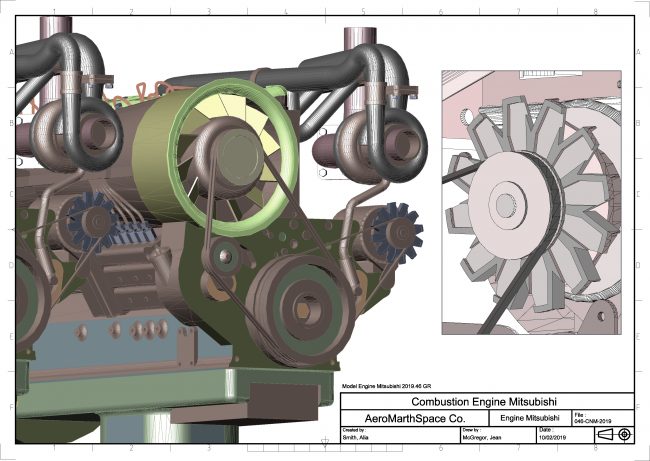DraftSight Premium and AutoCAD LT: Market Perception Versus Product Reality
CAD software is often divided into broad two categories: 2D drafting and 3D modeling. In practice, the distinction is blurry. Many 2D programs can display 3D objects, and some can create them. Conversely, most 3D programs have a 2D sketching or drafting mode, because 2D is still an essential part of any design process.
With the release of DraftSight® Premium, it becomes possible to design 3D objects and to work in a three-dimensional work-space. To put this transition in perspective, let’s compare DraftSight Premium and its leading competitor, Autodesk AutoCAD LT®.
Autodesk created AutoCAD LT as a streamlined, lower cost version of AutoCAD® in the early 1990’s. It was aimed at the retail market, back when Windows was just becoming the dominant operating system on PCs. At the time there were several competitors in the retail-priced 2D drafting space, all operating in MS-DOS® instead of Windows®. At the time, the comparative advantages of AutoCAD LT were its use of DWG, being a native Windows program, and its price. Nearly 30 years later these market advantages are no longer relevant. Windows is the industry standard. Virtually every CAD program can import DWG, and many can export it. Prices had changed drastically, as subscriptions replace the purchase of perpetual licenses.

Today Autodesk distinguishes between AutoCAD and AutoCAD LT in several ways, including an Application Programming Interface (API), 3D drafting, and visualization. All of these are found in AutoCAD but not AutoCAD LT. (It is possible to trick AutoCAD LT into drawing 3D objects such as rectangles, but it involves a workaround; it is not considered a feature.)
Autodesk describes AutoCAD LT as suitable for 2D drafting, drawing, and annotation work. Now that Autodesk sells both products only by subscription, the annual cost is $1600/year for AutoCAD and $400/year for AutoCAD LT (suggested US prices).
DraftSight Premium ($499/yr), by comparison, is capable of design work in both 2D and 3D. Like AutoCAD it can be extended by third-party programs, or users can write their own routines to customize the product. (For more on the DraftSight API, read “DraftSight API“ in this blog.) DraftSight Premium offers built-in rendering. DraftSight also has the additional benefit of integration with other Dassault Systemès software products, including SOLIDWORKS PDM to manage DWG files and HomeByMe to create home design plans. It is now an easy matter to start with design sketches in DraftSight, extend the design into 3D, then move the file to SOLIDWORKS for final production. Check out this short YouTube video for an example: https://youtu.be/bF6CrHHLb8s
While the total feature set makes DraftSight Premium more of a competitor to AutoCAD than to AutoCAD LT, market perception changes slowly. There is a clear difference between the two in how useful they can be in day-to-day production design and engineering environments. In my next series of articles for this blog, I will examine several of the new features in DraftSight Premium and how they extend the value of a DWG editor in most design and engineering settings.
IMPORTANT:
DraftSight 2019 for Windows® is offered in paid versions only.
Once you download and install DraftSight 2019 (free 30-day trial or purchased version), you will no longer be able to re-download or access any previous free version of DraftSight (2018 or earlier). All free versions of DraftSight (2018 or earlier) will cease to run after 12/31/2019.
Learn more about DraftSight 2019 here.



